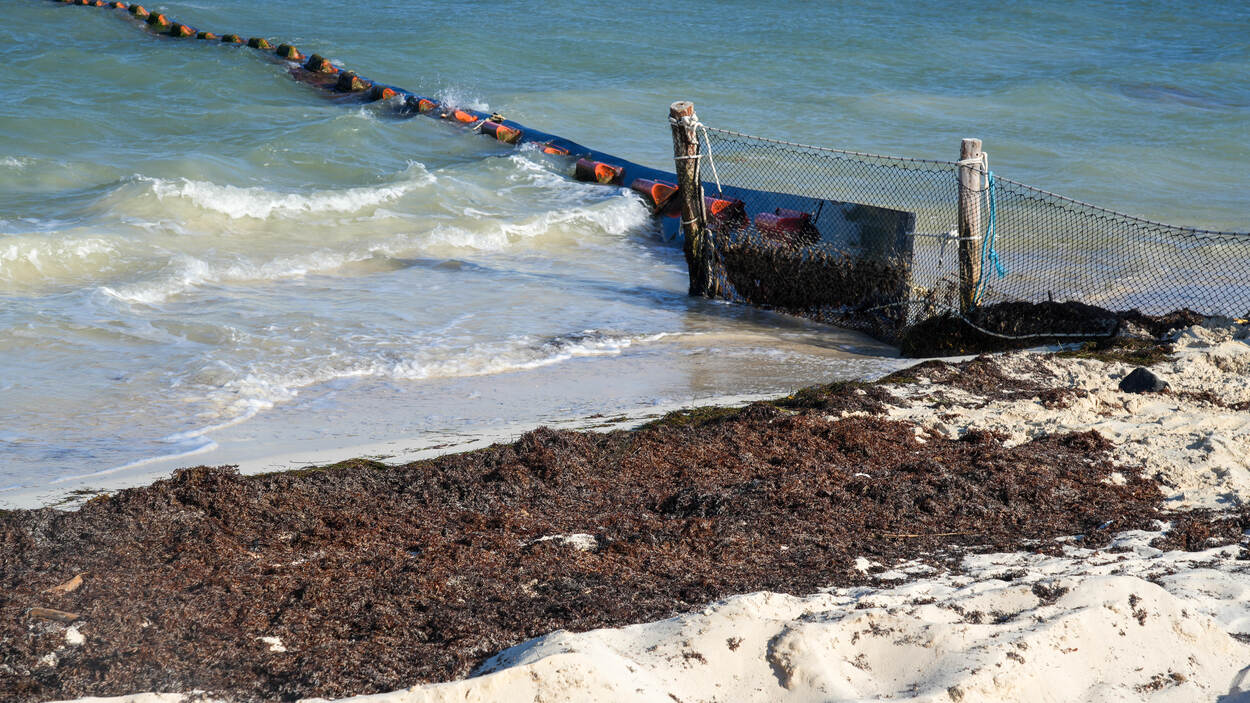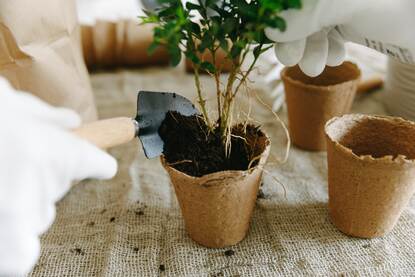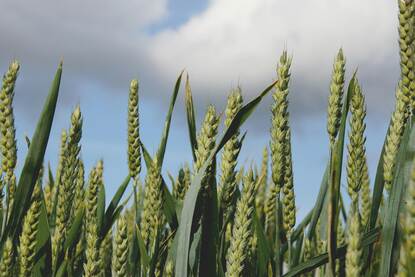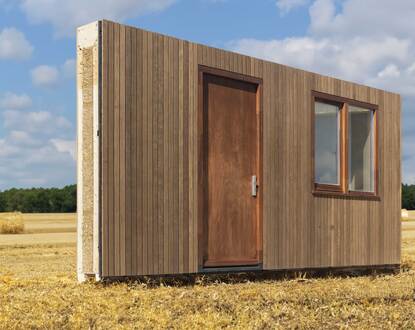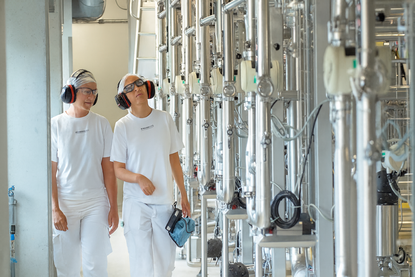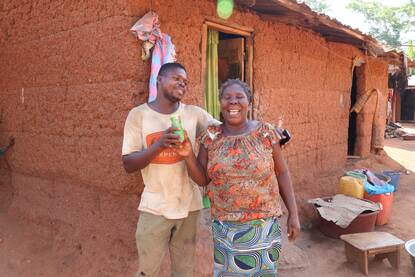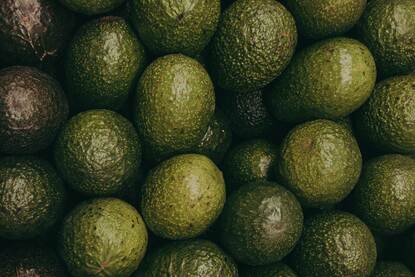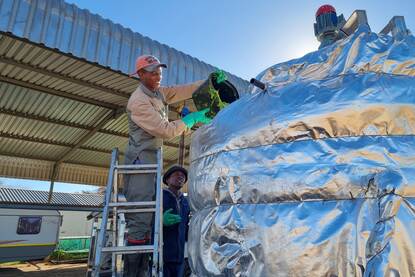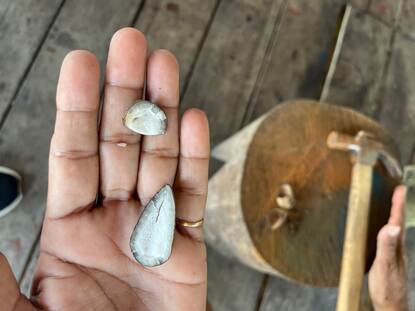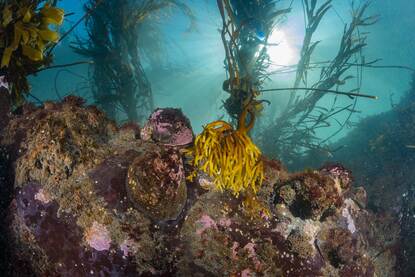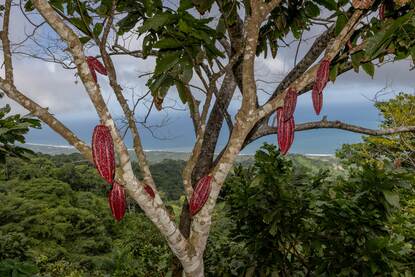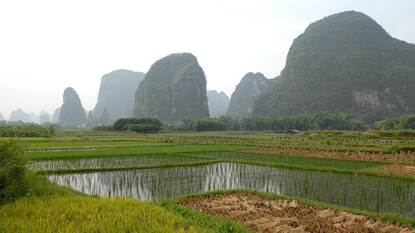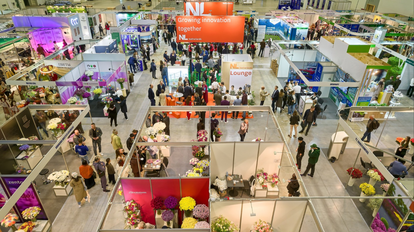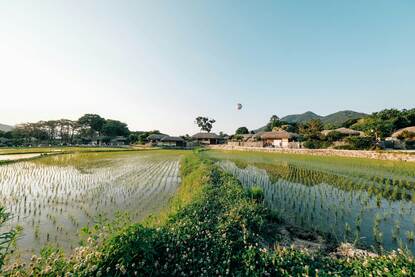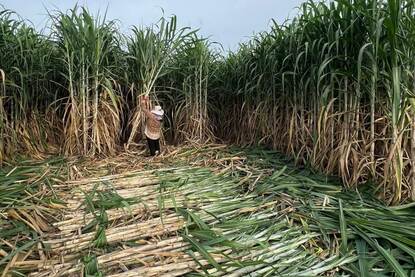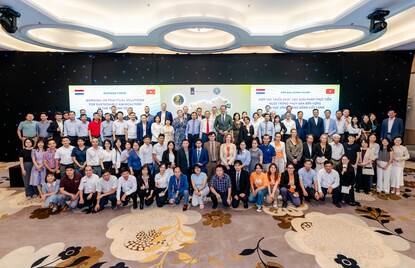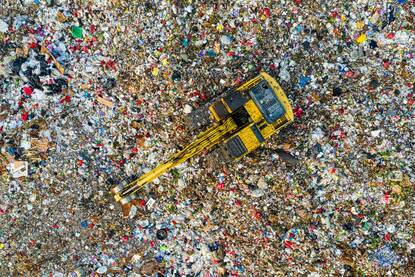Foto Sargassum and other seaweeds on the shores of Playa del Carmen. Source: LAN Mexico
The massive influxes of sargassum along Mexico’s Caribbean coast represent both an urgent challenge and a unique opportunity. While the ecological and economic damage is severe, recent initiatives demonstrate how this abundant biomass can be integrated into a circular bioeconomy. Through innovative valorization pathways, public–private partnerships, and international cooperation with the Netherlands, for example, Mexico is laying the foundations for solutions that could serve as a model for the wider Caribbean and the global South.
Sargassum – floating macroalgae – sustains a unique ecosystem in the Sargasso Sea, a triangle between Africa, the northern Caribbean, and the United States. It functions as a nursery, providing shelter and food for fish, turtles, and countless other marine species.
Since the early 2010s, however, massive blooms of sargassum have been forming in the southern Caribbean. For several months each year, the coastlines of Caribbean islands, Florida, and Mexico are overwhelmed by tons of brown, rotting seaweed. This threatens coral reefs and beaches and disrupts local economies.
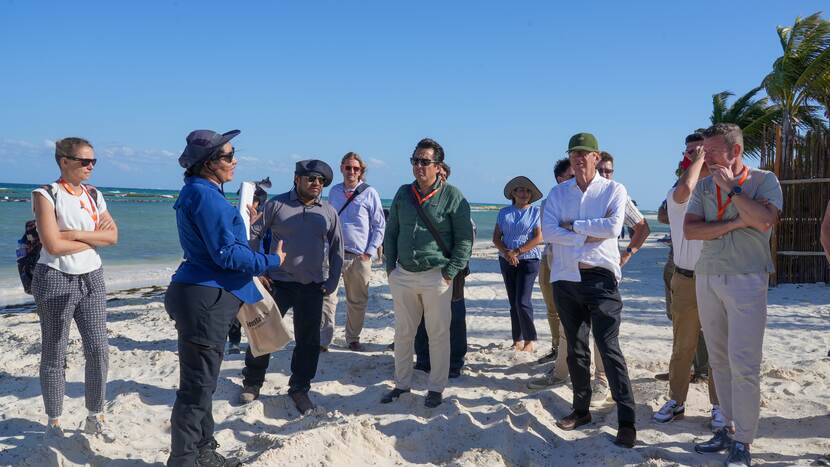
The sargassum crisis
Scientists are still debating the exact causes of this phenomenon, now known as the Great Atlantic Sargassum Belt. Many argue that nutrient runoff from intensive agriculture, carried by rivers such as the Amazon, Congo, and Mississippi, has fueled the growth.
Others point to changing circulation and wind patterns in the Atlantic – linked to the North Atlantic Oscillation – that displaced part of the Sargasso Sea’s algae to tropical waters around 2010. In these warmer, nutrient-rich waters, sargassum found ideal conditions to multiply. Whatever the combination of factors, the trend of the past fifteen years suggests that these blooms will remain a recurring challenge.
The impacts are especially severe in Mexico, where the states of Yucatán and Quintana Roo host some of the country’s most popular tourist destinations. The arrival of sargassum threatens not only ecosystems but also livelihoods. Estimates from the Inter-American Development Bank (IDB) suggest that Quintana Roo loses nearly 12% of its gross local product due to declining economic activity caused by reduced touristm. The hotel sector indicates that it spends around 135 million dollars annually on beach cleaning. Ecologically, bays become clogged, reefs are deprived of sunlight, turtles cannot nest, and beach erosion worsens through repeated cleaning efforts. Public health risks also emerge, as decomposing sargassum releases toxic gases and may contain heavy metals and bacteria.
In 2025, satellite data show more than 37.5 million tons of sargassum in the Atlantic, making it the most severe year on record. By July this year, 44,000 tons have already been removed from beaches and coastal waters in Quintana Roo alone. While the Mexican navy, municipalities, and the hotel sector attempt to intercept the seaweed before it reaches land, large-scale offshore technology is still lacking. The scale of the crisis underscores the need for structural solutions rather than temporary fixes.
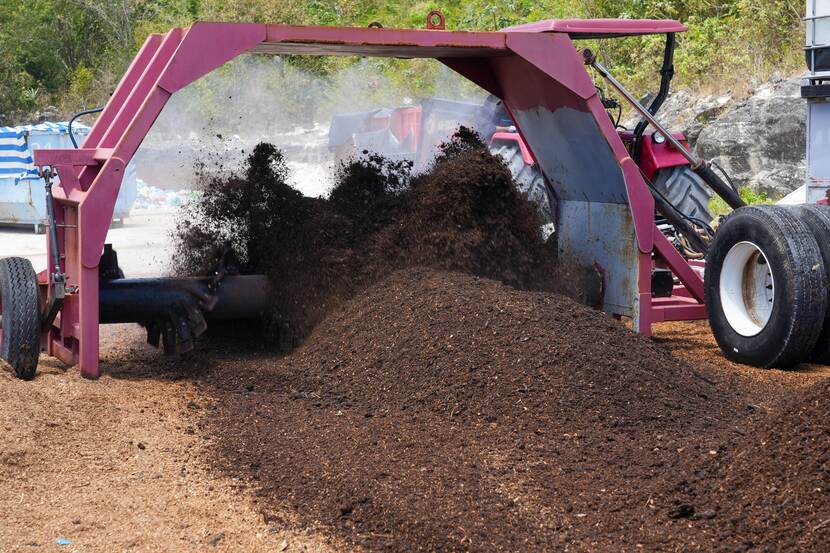
‘There are international market opportunities for sargassum, such as sustainable aviation fuel and cosmetics’
Bioeconomy as a solution
The crisis has made clear the urgency of finding alternatives. At the same time, many now realize that this biomass may also hold the key to the solution. By harvesting it offshore, potential for valorization emerges.
In 2022, the Netherlands Agricultural Network (LAN) team at the Dutch Embassy in Mexico City financed a study by Wageningen Food & Biobased Research on the valorization of sargassum in Mexico, focusing on biogas, construction materials, and nanostructured applications. Valorizing sargassum as biogas seems like a feasible short-term solution. Through anaerobic digestion, sargassum can be converted into methane-rich gas (50-70%). Pretreatments (biological, thermal, or chemical) can improve degradation and increase methane yields, and co-digestion with food waste or manure boosts production and makes large-scale application viable. The gas can then be used as green natural gas or electricity. Many other valorization options have also been identified; sargassum can be used for compost, bricks, and fertilizers.
There are several ongoing research and commercialization initiatives in the Caribbean to use sargassum for cosmetics, pharmaceuticals, and biomedical applications. Converting it into aviation fuel is another possible track that is under research.
Pablo Besquin from Oceanus International says:
‘We are advancing with different consortia on automated, land-based palletization systems tailored to local needs – bioplastics in the Netherlands, biogas and waste-to-energy in Mexico, and protein conversion for human consumption in Saint Kitts and Nevis. These initiatives show how sargassum can be transformed from a challenge into a valuable resource across diverse markets.’
Mexico takes essential steps
Building a bioeconomy around sargassum is far from a quick fix. Unlike controlled biomass cultivation, sargassum grows unpredictably. It is seasonal and varies greatly from year to year. Harvesting must take place at sea, posing both practical and regulatory challenges. Sustainable harvesting is essential to avoid creating new problems. Governance is another critical issue: who benefits from valorization, and who bears the costs?
The private sector, NGOs, and the Mexican government understand that only collaboration can provide solutions. In recent months, momentum has grown, and key conditions are being put in place. In July 2025, the state government of Quintana Roo introduced PODECIBI (Polos de Desarrollo de Economía Circular para el Bienestar), a new decree that gives tax benefits to companies working in circular economy hubs, including the one focused on using sargassum. In August 2025, sargassum was also formally included as a fishery resource in the National Fisheries Charter, creating a legal basis for large-scale offshore harvesting. Permits can be issued for up to 945,000 tons per year.
The European Union is supporting Mexico and other Caribbean countries to create sustainable value chains for sargassum and to give a push to approaches and operations in strategic and financial terms. In the framework of the EU Global Gateway Strategy, a forum will be organized together with a separate side event under the theme 'Beyond the Tide: Practical Approaches to Sargassum Response' on 8 October in Brussels.
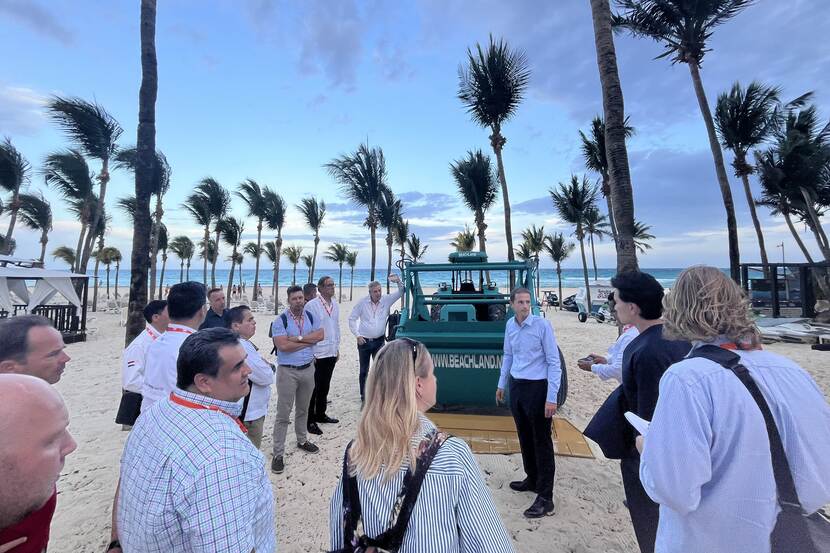
Mexican–Dutch cooperation
Together with Dutch company Dutch Clean Tech and partners, the state of Quintana Roo is developing a center where sargassum will be combined with wastewater sludge and processed into biogas. Dutch Clean Tech is designing a project in Cancun's hotel zone for the wastewater treatment of more than 60,000 hotel rooms:
‘We combine this with the valorization of sargassum through biodigestion and thermal recovery systems, with the goal of transforming it into clean, renewable energy. Satellite monitoring will allow us to locate sargassum on the open sea and plan its collection before it reaches the coast. Together with our partners, we are building a project that combines technology, financing, and sustainability - turning an environmental challenge into an energy solution for the region.’
The partnership between Dutch Clean Tech and Quintana Roo is just one example of the strong ties between the Netherlands and Mexico. Building on long-standing collaboration in water and circular economy, Dutch expertise is now being connected with Mexican needs in areas such as offshore collection, monitoring, and valorization.
The Dutch Embassy in Mexico supports the move from plans to execution, ensuring ecological and social sustainability remain central. In April 2025, the LAN team in Mexico organized a mission to Quintana Roo, bringing together eleven Dutch companies, governments, and researchers. Hosting a two-day conference for this group and the Mexican stakeholders further strengthened the Dutch-Mexican network of true pioneers collaborating on an integral solution.
Furthermore, a total of 25 Dutch companies have expressed their interest in working on sargassum in Mexico. The maritime sector has a crucial role here, to provide vessels or other technology for capturing sargassum at sea. Other complementary services and technologies the Netherlands can provide range from producing biogas and fertilizers to sustainable housing material. Seeing this complementarity, the sector is currently writing a proposal for the Partners in Business program of the Netherlands Enterprise Agency (RVO). In the meantime, the LAN team in Mexico provides the sector with information, news updates and a strong network.
Klaas Hofstra of Adverio Waste Systems says:
‘Joining the trade mission in April 2025 to Mexico strengthened our ambition to produce renewable biogas and sustainable fertilizer from sargassum. With our new company, Sustainable Planet Solutions, we have now established a base in Jamaica. From there, we are committed to expanding to Mexico and Belize to work on cleaner coasts and a circular economy.’
A pillar of a circular bioeconomy
The knowledge and experience Mexico and its partners are developing now may prove vital for the wider Caribbean and the global South’s bioeconomy agenda. Sargassum will not fully disappear from Caribbean shores. But by putting it to use, it can transform from a purely ecological nuisance into a pillar of a circular bioeconomy. If Mexico – supported by international partners – succeeds in realizing this transition, the model could inspire other countries in the Global South facing similar biomass challenges.
More information
Would you like to know more about the use of sargassum in Mexico’s bioeconomy? You can visit the country page of Mexico at the website Agroberichtenbuitenland.nl of the Dutch Ministry of Agriculture, Fisheries, Food Security and Nature. You can also send an email to the LAN team in Mexico City via mex-lvvn@minbuza.nl.
